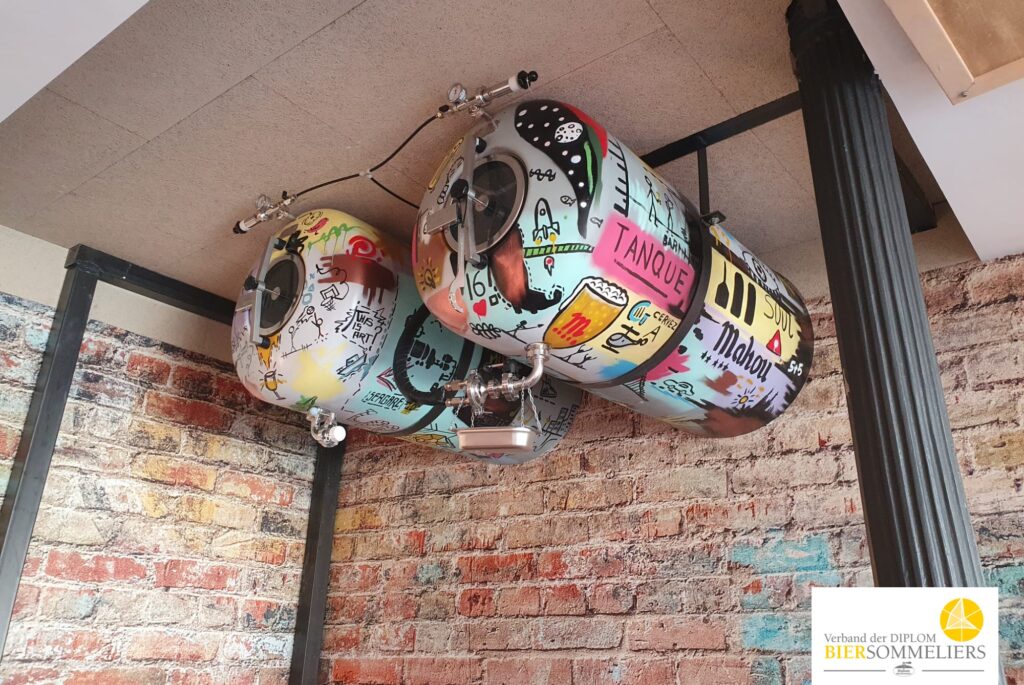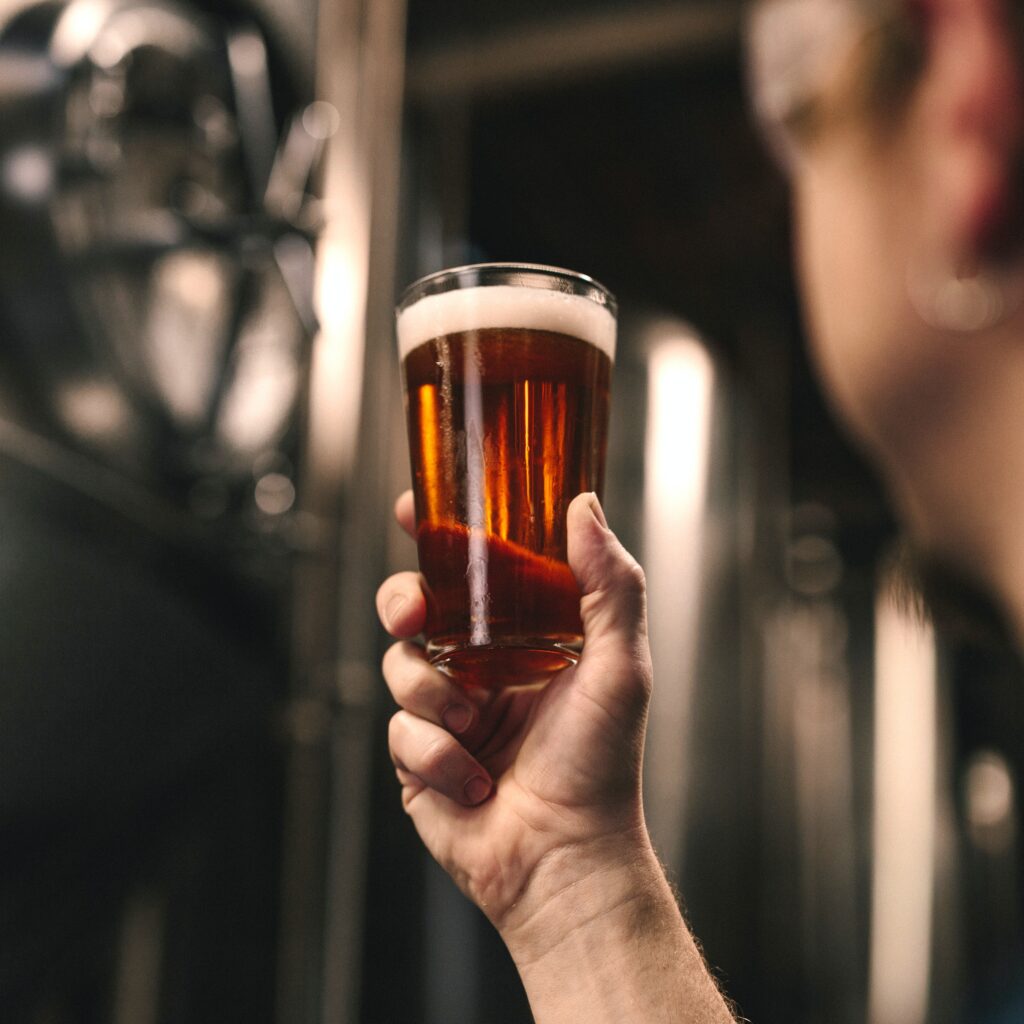As a brewer, you want to make sure your customers get the optimum experience when they order your beer in a bar.
AUTOR
Matthias Kopp
Bier-Kosmopolit & Biersommelier
AUTOR
Matthias Kopp
Bier-Kosmopolit & Biersommelier
On a press trip -read the blog about it here- last year on the beautiful island of Mallorca, we also visited the so beautiful Brewpub Brusca in Manacor.
One of the highlights was the old and deep cellar under the former windmill, which you could only enter through a flap in the floor and a long spiral staircase down.
And there were already the next surprises waiting. On the one hand, there is the barrel storage of the brewery, which is no wonder because “on the side,” the founder’s parents still have a winery, “Vins Miguel Gelabert,” on Mallorca, so good barrels for barrel aging are not in short supply.
On the other hand, there is also cold storage, and in it are several horizontally stored steel tanks with tiny little “manholes.”
My curiosity aroused, so I read the name Duotank on the plaque and talked to Miquel, one of the founders of Brusca, about the barrels.
Back in Germany, I was thinking about where I heard about the barrels, and it occurred to me that in my collaboration with Budweiser Budvar – watch the image clip here – the Duotanks were going.
And so, I contacted Duotank in Waalre from the Netherlands.
I’m a big fan of Belgian and Dutch brewing in and of itself, so this concept joins a long line of great ideas and beers from NL.

They are available in several sizes from 2.5 to 10 HL and in various finishes such as stainless steel, polished copper, or old look copper, as a painted copper tank in all RAL colors, or with company branding.
So the brewery can completely let off steam and realize itself.
And look at the pictures, don’t the tanks in the pubs and brewhouses look just great…?
Here’s a bit of name-dropping:
These are just a few breweries; countless bars and pubs still put the tanks in their stores as an eye-catcher and expression of authentic beer culture.
Oh yes, to the question of the tiny manhole. How small do you have to be to clean the inside of the tank?
Of course, no one sends small people in there, but only the inliners are changed through the hole.
Phew, lucky again…
AUTOR
Matthias Kopp
Bier-Kosmopolit & Biersommelier

Here I want to tell you about what I find interesting about it, son.
It’s a tank beer of sorts, but thought of a little differently, as the combination of up to 12 weeks of fresh tank beer and the tank itself as a marketing and promotional tool is unique.
The Duotank company has been around since 1985 and produces the very equipment for tank beer as a bag-in-tank concept.
The idea was to get beer from the brewery directly to the tap with the least loss of quality.
Well, for one thing, you have to reduce the individual steps themselves.
Let’s take kegging as an example, that’s easily six individual steps from the storage tank in the brewery to the tap, and with each one, the quality suffers.
With tank beer, there are only three steps.
With keg beer, you need carbon dioxide to push the beer out of the keg, so you saturate the fermentation carbon dioxide in the keg with CO2 to tap.
With tank beer, the beer is in a tear-resistant liner, and the tap pressure is pure compressed air acting on the liner to push the beer into the line to the tap.

And when the system is pressurized, you have almost 12 weeks of fresh beer in the tank instead of the scant 30 days of keg beer.
There’s no more lugging and chemical cleaning of the kegs, the deposit kegs no longer have to be returned to the brewery empty and back to the pub full, instead, a small tanker truck comes and pumps the beer into the tanks and does so at longer intervals, which is a logistical and cost advantage that should not be underestimated.
Well, and then the tanks themselves are a total eye-catcher!
Because the tanks are seen by Duotank as an integral part of the beer culture and can be prominently integrated in the pub, the bar, because they are available both insulated and non-insulated, lying and also standing.
As a brewer, you want to make sure your customers get the optimum experience when they order your beer in a bar.
As a brewer, you want to make sure your customers get the optimum experience when they order your beer in a bar.
As a brewer, you want to make sure your customers get the optimum experience when they order your beer in a bar.
As a brewer, you want to make sure your customers get the optimum experience when they order your beer in a bar.
As a brewer, you want to make sure your customers get the optimum experience when they order your beer in a bar.
As a brewer, you want to make sure your customers get the optimum experience when they order your beer in a bar.
As a brewer, you want to make sure your customers get the optimum experience when they order your beer in a bar.
As a brewer, you want to make sure your customers get the optimum experience when they order your beer in a bar.
As a brewer, you want to make sure your customers get the optimum experience when they order your beer in a bar.
As a brewer, you want to make sure your customers get the optimum experience when they order your beer in a bar.